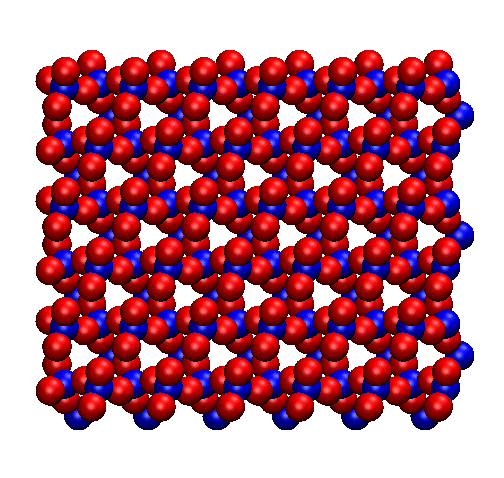Can the Buckingham potential model high temperatures in NPT ensemble? I have read that it has trouble given the dominance of the power term. Is there a threshold at which it fails for different materials? I know I have read papers where authors melted a material with the Buckingham potential.
Jackson
Define system (are you using modeling clay?)
Define temperature (100C in boiling water feels pretty high to my sense of touch)
Do you think this list is a better resource than those REVIEWED papers you read?
Carlos
For instance, is the paper by van Beest, Kramer, and van Santen, they model silicas and aluminophosphates. If I am not mistaken, the melting temperature with MD for these is about 5000K.
So, what’s your point? You posted a generic question that made little sense as classical potential parametrizations are highly limited. Typically they only work for a certain material under very specific conditions. Asking how BKS will perform in the abstract with no reference to a certain parametrization (material/conditions) suggests that you were either lazy when composing your message or should go back and review your simulation knowledge.
I volunteer my time here to help but my telepathic skills to date are none.
Carlos
I thought referring to the parameterization of the paper by van Beest, Kramer, and van Santen was enough. Here goes: Physical Review Letters, Volume 64, Number 16, p. 1957. There is a parameterization for O-O and Si-O. Let’s say we want to model at Temp = 5000K. Ensemble = NPT. Is there anything else that you need to address my question?
I know the BKS paper.
Now I assume your Q is: can I use this parametrization to model SiO2 at 5000K?
If indeed this is what you are asking, then look in the lit to see if someone has proved the opposite. If there is no work along these lines then ask yourself why is that you need a classical potential to perform your task? Next, if you decide to go with it, you need to find a way to show that such a parametrization indeed works well at the conditions you have requested. I would not take people’s words unless they provide you with more tangible facts showing they have hands on experience dealing with the problem.
Carlos
I believe what you are referring to is that the potential
is too soft at high temperatures (for any ensemble, NVE,
NVT, NPT) which can lead to bad dynamics. I think
the typical solution to this is to spline it to a more repulsive
core at short distances. Paul has experience with this (CCd).
Steve
Yes, many years ago Steve helped us build a modified Buckingham potential for SiO2 that included a repulsive core as a spline. We used it to melt quartz then quench into amorphous SiO2. Then we switched to a bonded force field. I’ll attach some files that may be helpful.
Paul


data.py (10.6 KB)
dump.py (35.3 KB)
dump.xyz (259 KB)
pdb.py (9.18 KB)
silica.tabulated (121 KB)
sio2.data (72.2 KB)
sio2.in (539 Bytes)
sio2.py (2.13 KB)
sio2pore.py (69.9 KB)
nanopore water simulations.pdf (614 KB)

